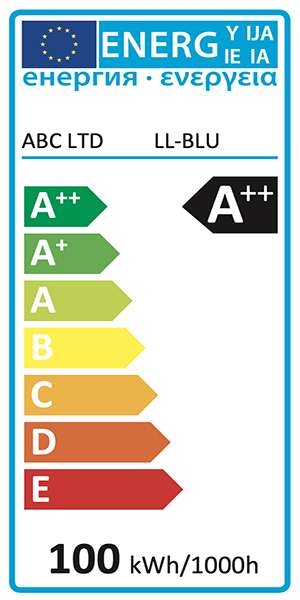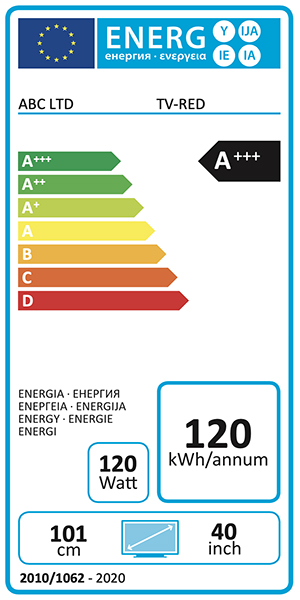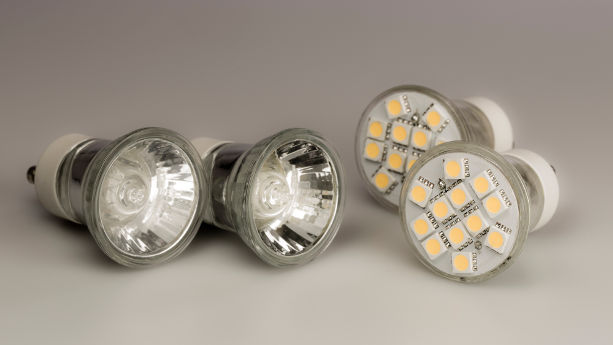The purpose of the Energy Label is to inform the consumer of the energy efficiency for certain products. Such products include washing machines, refrigerators, TVs, Air Conditioners, and other home appliances. Note that the Energy Label is mandatory if your product falls within the scope of the Energy Label Framework Regulation.
In this guide, we explain what EU importers and manufacturers must know about label creation, energy efficiency classes, and more.
Content Overview

FREE CONSULTATION CALL (US, EU & UK)
- Request a free 30-minute call with Ivan Malloci to learn how we can help you with:
- Find product requirements
- Certification and labeling
- Lab testing
Energy Label Framework Regulation
The EU Energy Labelling Framework Regulation lays down specific labeling requirements for energy-related products placed on the EU market, complementing the Ecodesign Directive, which stipulates the technical requirements for the energy consumption of the same class of products.
In particular, energy labels provide a scale that ranks the energy consumption of the appliance from Class A, which characterizes the most efficient appliances, to Class G. In this guide, we explain what products need an energy label, how to create one, and what information it shall contain.
The goal is to enable consumers to choose their appliance also based on their energy consumption and sustainability, in order to reduce consumption and energy bills.
The regulation covers 15 product groups. Here some examples:
- Lighting products
- Kitchen appliances
- Displays and TVs
- Computers and servers
- Washing machines and dryers
- Air conditioners and fans
Is the Energy Label mandatory?
If your products fall into the scope of the regulation, then the energy label is mandatory on the product or the packaging, in order to provide a clear indication of the energy efficiency of products to consumers.
Note that the market surveillance authorities can declare your product non-compliant if you don’t comply with the regulation and attach the energy label on your products.
How much does it cost?
As we explain in detail in the next section, the EU offers a free online tool that allows you to self-issue a compliant energy label in a few minutes, assuming that you know exactly what information to input.
So, unless you decide to hire a consultant, the creation of the energy label doesn’t cost anything.
Do I need to register my product?
The regulation requires importers and manufacturers to create an account and register their products in the European Product Database for Energy Labelling (EPREL) before placing them on the EU market.
How to Create an Energy Label
In this section, we explain how to create a tailor-made energy label in high-resolution PDF format, using the Energy Label Generator.
Step 1: Choose your product category and product
First, you will need to determine the product group of your appliances, for example, air conditioners, dishwashers, or televisions. The labeling information is unique according to different product groups. You shall then select the relevant product group on the Energy Label Generator website.
For some product groups, lighting, for example, you might also need to select a sub-group, such as:
1. Luminaire compatible with bulbs
2. Luminaires containing only non-replaceable LED modules
Step 2: Add company data and product specs
After selecting the product group, you will need to input some information such as:
- Company name
- Model identifier
- Energy efficiency class (ie. A, B, C)
- Energy consumption
- Language of the label
- Orientation (vertical or horizontal)
According to the class, the Energy Label Generator might require additional information, such as: “Is the luminaire sold with a bulb? (within the packaging)”
Step 3: Generate and download the label
Once you input all the required information, you can generate and download the energy label in PDF format from the website. As specified in the website, you can use the file for either printing your label, or publishing it on your website.
Note that you can also download an InDesign template from this page, to create a vectorial file for your label. In this case, however, you will either need to have some experience with web designing or hire a designer to create your files.
What is an Internet label?
If you wish to sell your energy-related products through the internet, the EU also allows you to create an “Internet label”, that is an image of an arrow with color that corresponds to the relevant energy class (ie. green for Class A, or red for Class G), in JPG or PNG format.
You can show the full label via a “nested display”. This allows you to save screen space on your online store.
Energy label information
As already said, for each group of energy-related products, manufacturers and importers shall include some information, while creating their energy label. In this section, we explain what information is needed, for several classes of products.
Also, note that starting on March 1, 2021, the energy label shall also include QR codes. Consumers will then be able to scan the code with their phone and obtain more information about the product.
Lighting Products

The information included on labels for electrical lamps and luminaires might be different according to the specific product.
For example, the supplier’s name and the model identifier is only required for some types of luminaires. The minimum dimension of the label is 36mm x 76mm. If there is not enough space in the product, it is enough to print the labeling in the packaging. You find an example in the image on the right.
Label Information
- Supplier’s name
- Supplier’s model identifier
- Languages
- Energy efficiency class
- Weighted energy consumption (EC) in kWh per 1,000 hours
Product examples
- LED lights
- Decorative lights
- Table lamps
- Outdoor commercial lights
Displays and TVs

The Energy efficiency classes for TV might vary depending on the year of placement in the market.
For example, A++ to E for placement between 2017 and 2019, and A+++ to D starting from 2020. The printed label has to have a dimension of at least 60mm x 120mm. We provide an example in the right.
Label Information
- Supplier’s name
- Supplier’s model identifier
- Energy efficiency class
- On-mode power consumption in Watts
- Annual on-mode energy consumption
- Visible screen size
Product examples
- LCD TVs
- OLED TVs
- QLED TVs
- Smart TVs
Dishwashers
The energy efficiency of dishwashers is on a scale from A+++ to D. Compared to TVs and lighting products, you need to include more information concerning the product’s performance. The label should be affixed on the outside of the front or top of the household dishwasher, and its dimension must meet a minimum size of 110mm x 220mm.
Label Information
- Supplier’s name
- Supplier’s model identifier
- Energy efficiency class
- Annual energy consumption (AEC) in kWh per year
- Annual water consumption (AWC) in liters per year
- Dryer efficiency class
- Rated capacity in standard place settings
- Airborne acoustical noise emissions expressed in dB(A) re 1 pW
Product examples
- Built-in dishwashers
- Portable dishwashers
- Countertop dishwashers
- Top-control dishwashers
Refrigerators
The Energy label for refrigerators must have a minimum dimension of 110mm wide x 220mm high. Manufactures or importers shall indicate their energy efficiency with a scale from r A+++ to G.
Label Information
- Supplier’s name
- Supplier’s model identifier
- Energy efficiency class
- Annual electricity consumption in kWh
- Net volumes of all filled compartments functioning at chilled operating temperature
- Net volumes of all compartments functioning at frozen operating temperature
- Climate class
Product examples
- Bottom Freezer refrigerators
- French door refrigerators
- Mini Fridges
- Counter-depth refrigerators
- Side-by-side refrigerators
Ovens
The energy label is applicable to both gas ovens and electric ovens. However, the information on the label is different. For both types of ovens, the energy label must have a minimum dimension of 85 mm x 170 mm.
Label Information
- Supplier’s name
- Supplier’s model identifier
- Energy efficiency class of the cavity
- Usable volume of the cavity in liters
- Energy consumption per cycle: heating function (conventional) in kWh/cycle
- Energy consumption per cycle: heating function (conventional) in MJ/cycle (Gas ovens only)
- Energy consumption per cycle: Forced air convection in kWh/cycle
- Energy consumption per cycle: Forced air convection in MJ/cycle (Gas ovens only)
Product examples
- Gas ovens
- Electric ovens
- Conventional ovens
- Convection ovens
- Microwave ovens
- Toaster grill ovens
Washing machines
The energy efficiency for washing machines is on a scale from A+++ to D. Manufacturers and importers shall affix a label with a minimum dimension of 110mm x 220mm, and display it on the outside of the front or top of the washing machine.
Label Information
- Supplier’s name
- Supplier’s model identifier
- Energy efficiency class
- Weighted annual energy consumption in kWh per year
- Weighted annual water consumption in liters per year
- Rated capacity in kg
- Spin-drying efficiency class
- Airborne acoustical noise emissions
Product examples
- Top load agitators
- Front-load impellers
- Top load impellers
Air conditioners
Manufacturers or importers shall place the energy label on the air conditioners with a minimum dimension of 110mm x 220mm. They shall also indicate their energy efficiency with a scale from A+++ to G (manufactured from 2019).
Label Information
- Supplier’s name
- Supplier’s model identifier
- Energy efficiency class
- Annual electricity consumption in kWh
- Sum of the net volumes in liters of all chilled compartments functioning at chilled operating temperature
- Sum of the net volumes in liters of all compartments functioning at frozen operating temperature
- Climate class
Product examples
- Central air conditioners
- Window air conditioners
- Portable air conditioners
- Smart air conditioners
- Geothermal air conditioners





















Hi Vincent,
Appreciate the resource. There is no explicit reference of air purifiers and whether they are subject to the EU energy label. Could you please confirm if they are subject to the Energy Labelling requirements and whether the “new rating system” applies?
Thank you,
Dear Vincent,
From what I read on the “Your Europe” website (https://europa.eu/youreurope/business/product-requirements/labels-markings/energy-labels/index_en.htm) the labels are only required for:
– Refrigerators (as of 1 March 2021)
– Dishwashers (as of 1 March 2021)
– Washing machines (as of 1 March 2021)
– Televisions (as of 1 March 2021)
– Light bulbs and lamps (as of 1 September 2021)
There is no mention of displays, computers, servers, air conditioners and fans.
Can you please inform me where you found your information?
Kind regards
Hi Dirk!
The source you shared is about the “new rating system” for selected categories of products. Meanwhile, other energy-related products are still subject to the Energy labeling requirements (the new rating system is not applicable in that case).
You can find more product groups in the link below.
https://ec.europa.eu/info/energy-climate-change-environment/standards-tools-and-labels/products-labelling-rules-and-requirements/energy-label-and-ecodesign/energy-efficient-products_en
Regards, Vincent Cheng